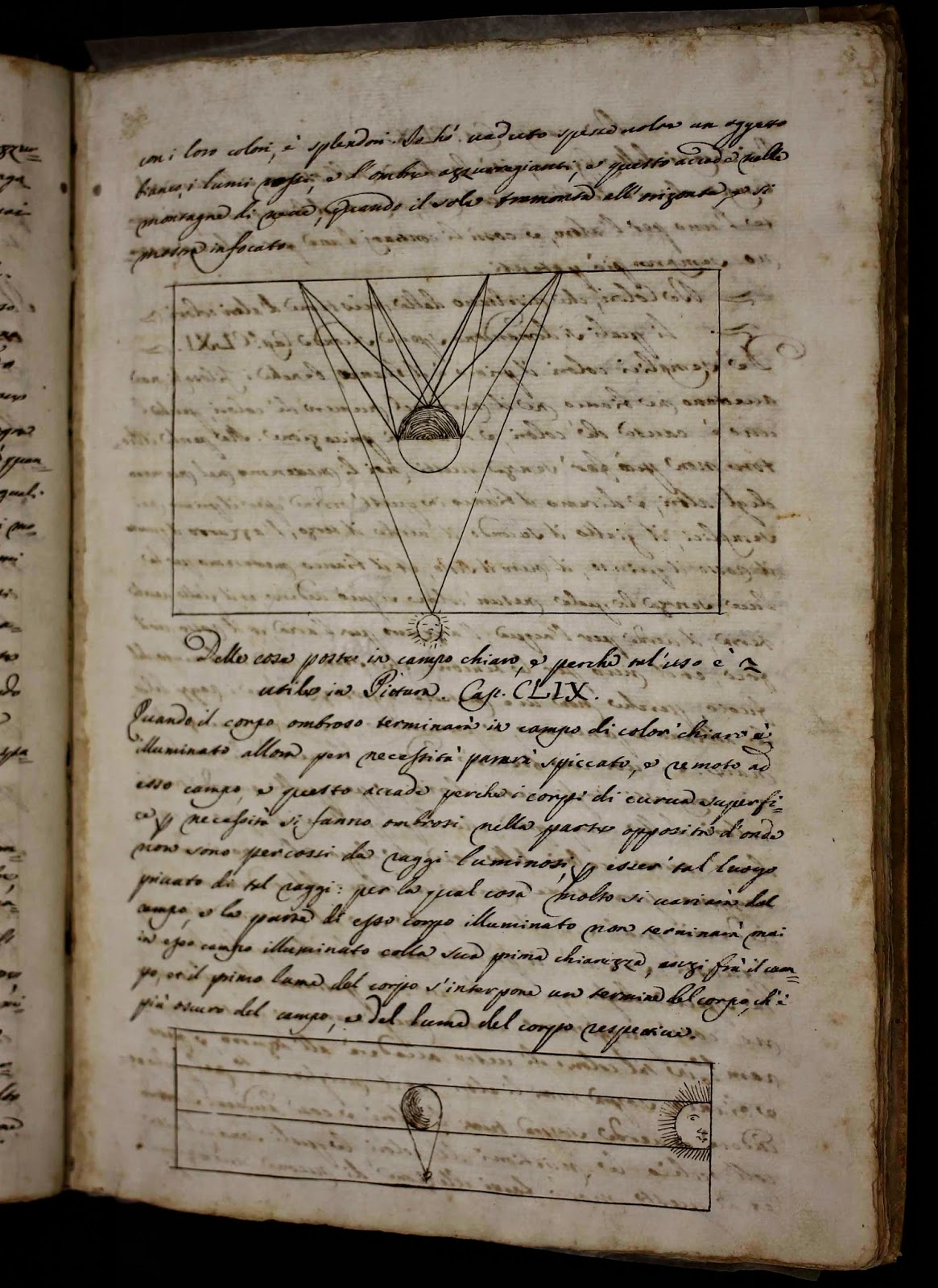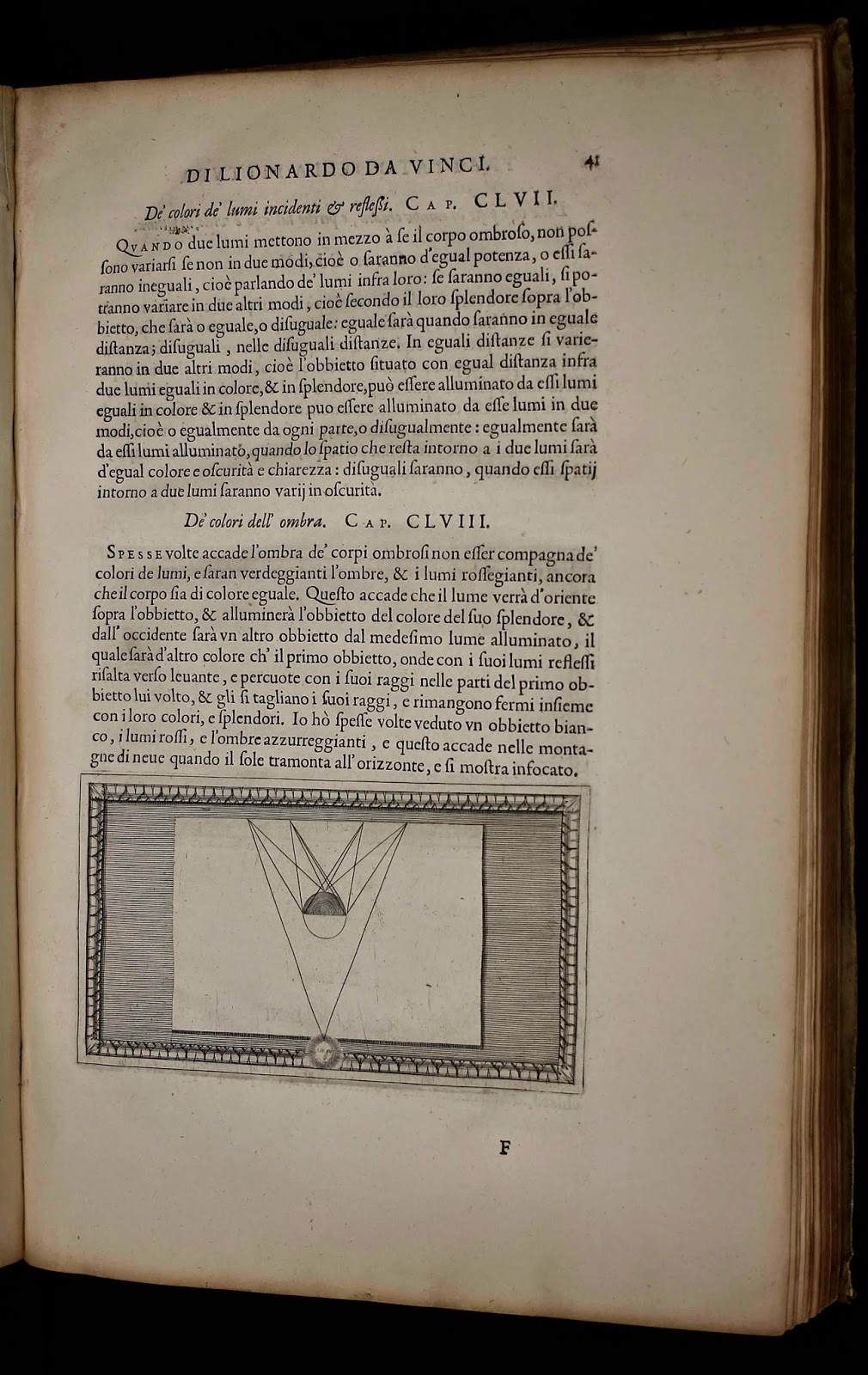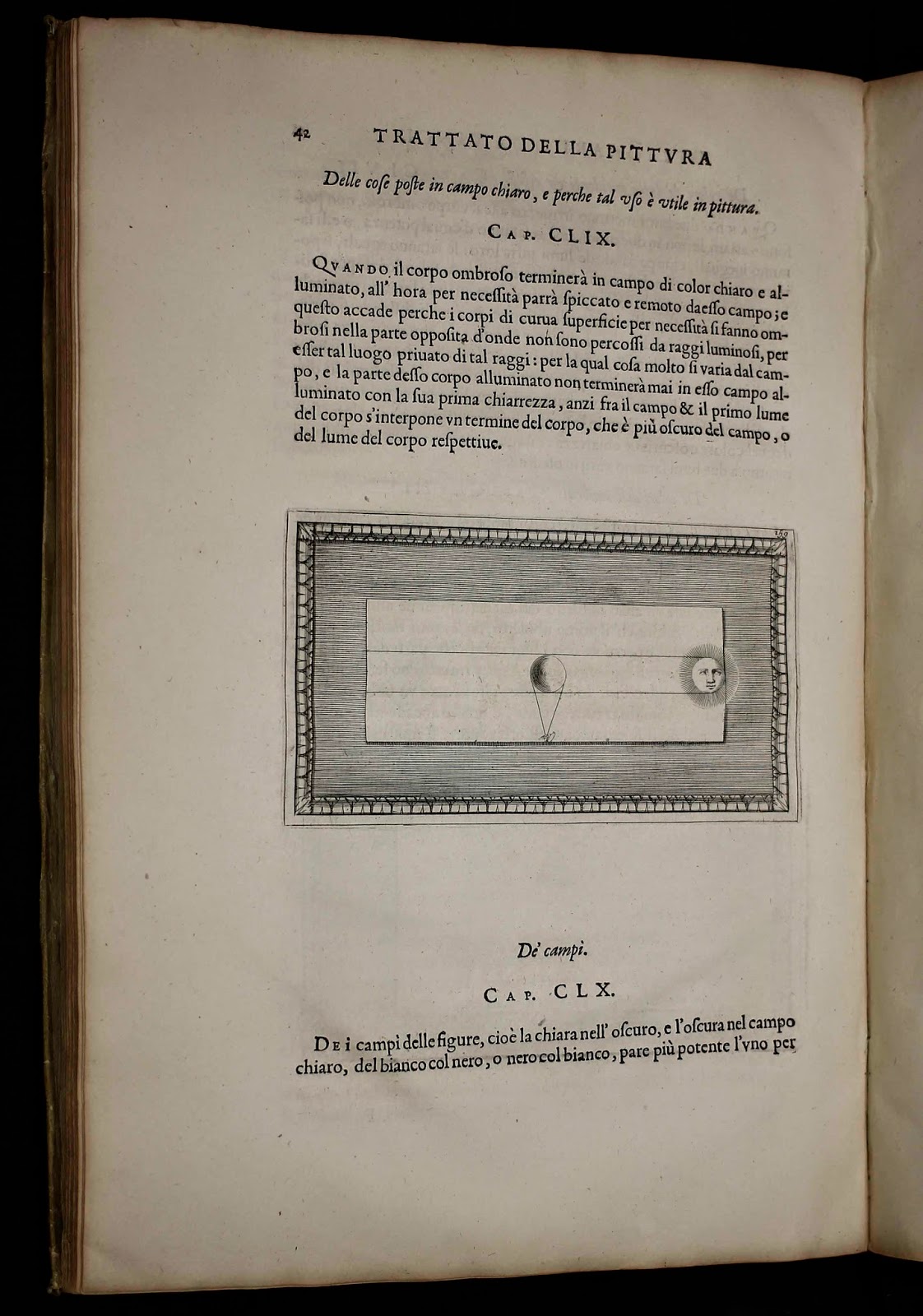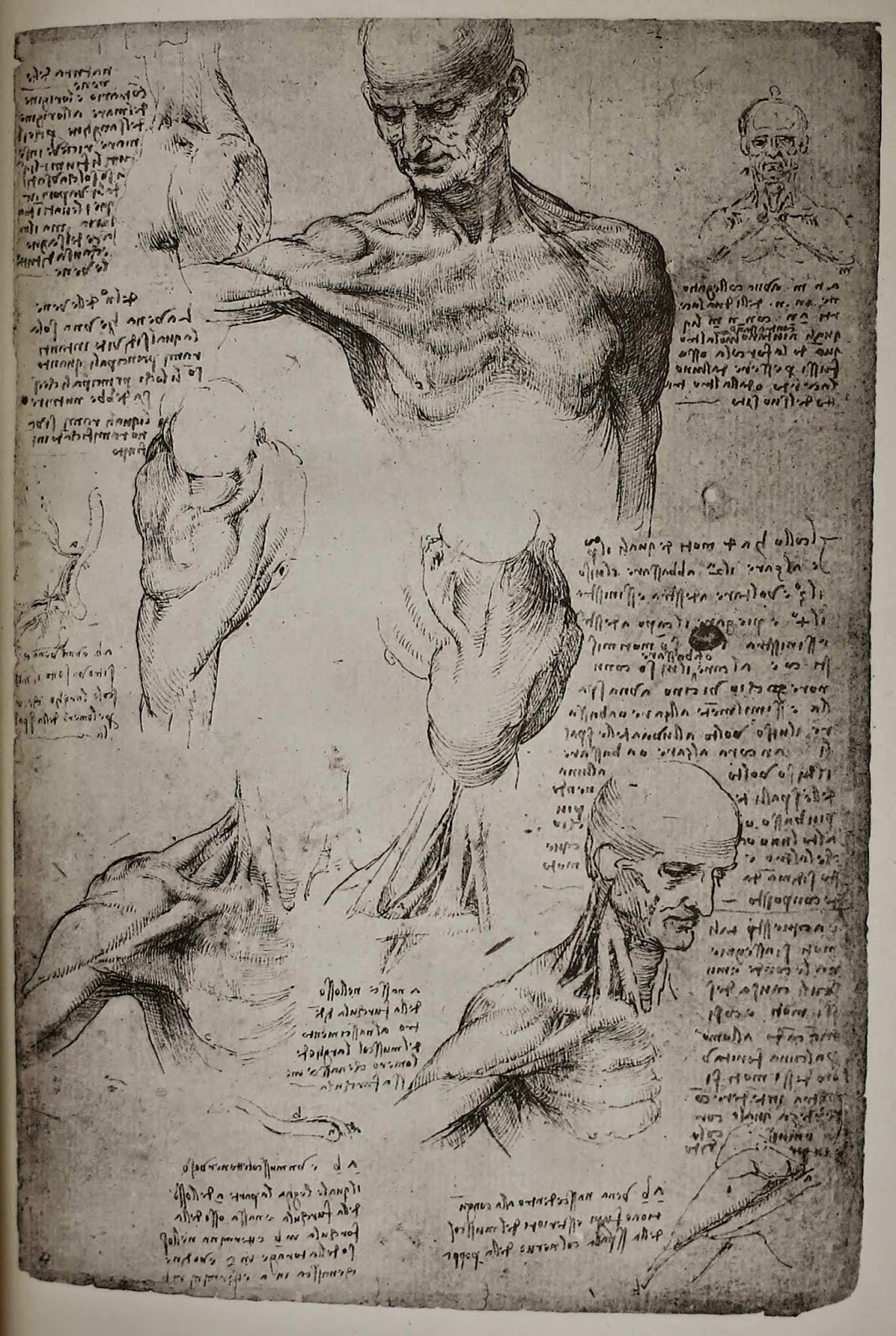Leonardo da Vinci Collection
April 3, 2015
Description by Ryan Kacani, undergraduate student in History and Medieval & Renaissance Studies and Archives & Special Collections assistant.
 Leonardo da Vinci (1452-1519) was perhaps the single-most talented and polymathic man in human history. While his most memorable and arguably greatest achievements have been immortalized in paint, charcoal and ink, the painter and inventor was also staggeringly gifted in sculpture, mathematics, cartography and a wealth of other fields that place him firmly atop the plinth of the quintessential Renaissance Man. In his “Lives of the Painters,” Giorgio Vasari said of Da Vinci, “beauty, grace and talent being united in such a manner, that to whatever the man thus favoured may turn himself, his every action is so divine as to leave all other men far behind him.”[1]
Leonardo da Vinci (1452-1519) was perhaps the single-most talented and polymathic man in human history. While his most memorable and arguably greatest achievements have been immortalized in paint, charcoal and ink, the painter and inventor was also staggeringly gifted in sculpture, mathematics, cartography and a wealth of other fields that place him firmly atop the plinth of the quintessential Renaissance Man. In his “Lives of the Painters,” Giorgio Vasari said of Da Vinci, “beauty, grace and talent being united in such a manner, that to whatever the man thus favoured may turn himself, his every action is so divine as to leave all other men far behind him.”[1]
Having such characteristics, it is fitting that over the past half millennium Da Vinci has been one of the most studied individuals, with works on his life bridging many academic and popular fields. Brandeis University’s Special Collections holds one of the most comprehensive collections of Vinciana (or Da Vinci related materials) in the United States. Comprising over 1,000 separate volumes, the Leonardo Da Vinci collection contains a remarkable breadth of work on and by Leonardo Da Vinci. The collection comprises both scholarly and literary works; Dmitri Merejkowski’s 1900 novel “The Romance of Leonardo da Vinci” is represented by 22 editions in its original Russian, as well as English, French and a number of other languages. The collection was created by a generous donation of nearly 800 works by Dr. Bern Dibner (1897-1988). Dibner, who significantly contributed to other Brandeis collections as well, donated the bulk of the Da Vinci collection in 1958, and since that date the original collection has grown to its current size. Of particular note in the collection are early reproductions of Da Vinci’s notebooks and selected works, several of which will be highlighted here.
 First among such reproductions is Da Vinci’s “Trattato della pittura,” the “Treatise on Painting.” The work, which is comprised of manuscripts compiled by Da Vinci’s student Francesco Melzi in the mid 16th century, displays Da Vinci’s approach to what he called “The Science of Painting.” The Brandeis Da Vinci collection has two significant copies of the treatise, the first a handwritten manuscript, and the second the first printed volume. The manuscript, which dates to the early 1700’s, is beautifully handwritten and bound in a single volume. The scribe seems to have been an artist himself, for he not only lovingly copied every word of Da Vinci’s “Treatise,” but faithfully and impressively copied the illustrations and diagrams Da Vinci included to demonstrate the various techniques discussed in the text.
First among such reproductions is Da Vinci’s “Trattato della pittura,” the “Treatise on Painting.” The work, which is comprised of manuscripts compiled by Da Vinci’s student Francesco Melzi in the mid 16th century, displays Da Vinci’s approach to what he called “The Science of Painting.” The Brandeis Da Vinci collection has two significant copies of the treatise, the first a handwritten manuscript, and the second the first printed volume. The manuscript, which dates to the early 1700’s, is beautifully handwritten and bound in a single volume. The scribe seems to have been an artist himself, for he not only lovingly copied every word of Da Vinci’s “Treatise,” but faithfully and impressively copied the illustrations and diagrams Da Vinci included to demonstrate the various techniques discussed in the text.
The printed “Treatise”—the first printed copy of any of Da Vinci’s manuscripts—was published by Rafaelle du Fresne in Paris, 1651. The first French translation of this work, by Roland Freart, also appeared in that year and is included in the collection.
The printed copies of “Treatise on Painting,” here compared to the handwritten manuscript, show the other side of Da Vinci scholarship; they are not just for promising young artists, but are meant for the masses as well. In companion to the copies of “Treatise on Painting,” Special Collections also holds a handwritten manuscript of Alberti’s “On Painting,” dating to 1485.

DaVinci, who would have been 33 when the unknown scribe copied Alberti’s 1435 work, was a great admirer of the elder artist, and “On Painting” undoubtedly influenced his own work.
The Da Vinci collection also holds both folios of Da Vinci’s iconic work on anatomy, the “Codice Dell’anatomia.” Curiously, while both folio A and folio B of the “Codex of Anatomy” were printed by the same publishing house in Paris at the turn of the 20th century, one is in primarily Italian, while the second places a greater emphasis on the French translation. The original manuscript itself is housed in the Royal Library at Windsor, in addition to a number of Da Vinci’s other notebooks [2]. The sketches reproduced in these copies of “Codice Dell’anatomia” are stunning. Da Vinci was, first and foremost, a scientist, and his grasp of human anatomy, brilliantly illustrated here, manifests the long hours he spent examining bodies in the hospitals of Florence.
 The beautifully rendered natural human forms of “Dell’anatomia” are contrasted by the sharply utilitarian schematics in the “Codice Atlantico.” The first printing of the “Codice Atlantico,” which contains countless mechanical illustrations of Da Vinci’s inventions, was actually only a selection of pages from Da Vinci’s manuscript. This publication, titled “Saggio delle opera di Leonardo da Vinci,” was printed in Milan 1872, and is included in the Da Vinci collection. The two works together, “Codice Dell’anatomia” and “Codice Atlantico,” epitomize Da Vinci’s two natures, as both painter and engineer, while also proving he was, above all, a brilliant scientist.
The beautifully rendered natural human forms of “Dell’anatomia” are contrasted by the sharply utilitarian schematics in the “Codice Atlantico.” The first printing of the “Codice Atlantico,” which contains countless mechanical illustrations of Da Vinci’s inventions, was actually only a selection of pages from Da Vinci’s manuscript. This publication, titled “Saggio delle opera di Leonardo da Vinci,” was printed in Milan 1872, and is included in the Da Vinci collection. The two works together, “Codice Dell’anatomia” and “Codice Atlantico,” epitomize Da Vinci’s two natures, as both painter and engineer, while also proving he was, above all, a brilliant scientist.
Notes
- Vasari, Giorgio. “Lives of seventy of the most eminent painters, sculptors and architects.” Translated by Mrs. Jonathan Foster. New York: C. Scribner's Sons. 1897.
- See the full illustrations from the “Codex”